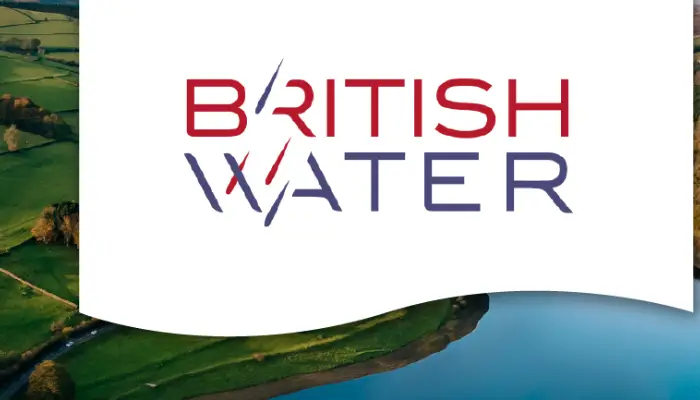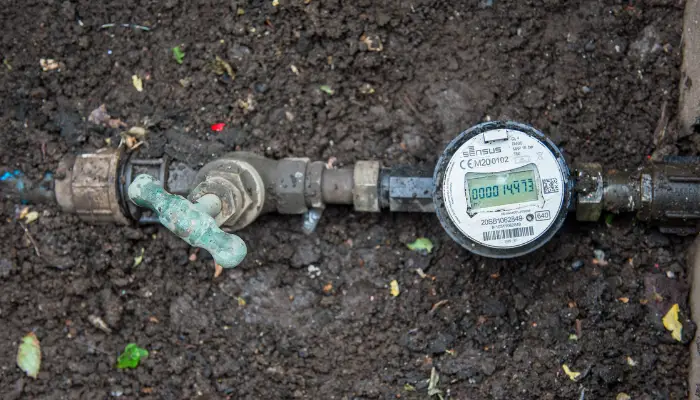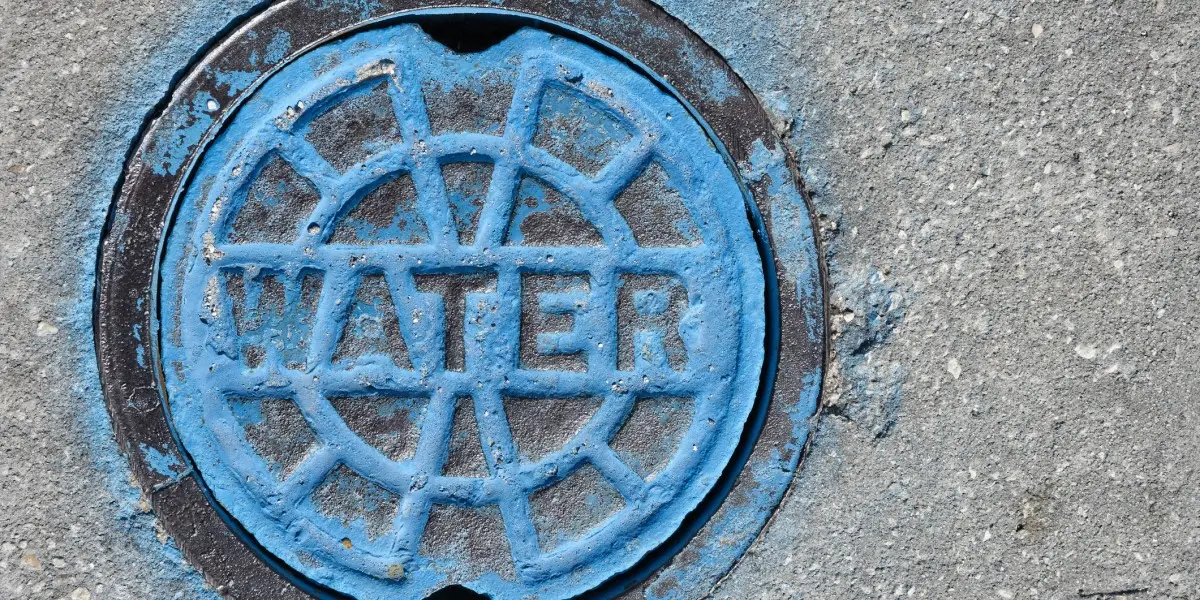The case for Advanced Metering Infrastructure (AMI) in water seems to grow with every development. Arqiva's Peter Baker adds to the discussion in this article from The Water Report.
This article first appeared in The Water Report - April 2022.
The case for Advanced Metering Infrastructure (AMI) in water seems to grow with every development. Just this month, some of the scenarios in Water UK’s Leakage Routemap depend on it, and we now have a statutory demand reduction target coming in under the Environment Act.
Last year, seven more areas were designated as seriously water stressed, and a report commissioned by communications infrastructure provider Arqiva demonstrated an unequivocal cost benefit case for all water companies to invest in smart meters for household customers. This month, that case was strengthened by a report commissioned by MOSL which points to further cost benefit for wholesalers to invest in AMI for large users and other business customers where household rollout is taking place.
Hard evidence
Real world evidence of benefit is also starting to come in. Arqiva recently announced that it has added the millionth AMI smart water meter to its fixed nationwide tower network, and that these meters could be saving over 66m litres of water a day through improved leak detection, more detailed insight into water consumption and greater consumer engagement – with the associated environmental benefits.
First mover in the UK Thames Water has been collecting hourly data from its smart customers (620,000 and counting) since 2015, spurred on by the need to cut demand. Water demand reduction manager Andrew Tucker explains the choice: “It’s about the additional leakage and the additional usage reduction that we will get from having a smart capability as opposed to the traditional meter system. That additional water saving was enough to justify the additional investment.”
Seven years on and he says adopting AMI was “the best choice”. “We have to save water, and stop leaks. The insight from the data is showing so many more leaks, particularly from the customer side…Historically, that water balance puts all that lost water on to us – whereas a lot is on the customer side, especially inside the home. So we’re getting a more accurate water balance.” He adds that the frequency of the data collection means customers can be notified of leaks in two days rather than having to wait for up to 12 months, and that 70-80% fix their own leaks within a week.
Tucker makes a topical observation too: that recent rises in the price of fuel and wages are hitting companies with AMR meters that require drive-by reads, and in some parts of the country monthly reads have slipped to three or six monthly. Whilst AMI provides greater cost benefit, the current economic climate does impact the sector’s ability to invest in these larger capital programmes. Beyond these vital basics, there are also more creative uses of smart data coming through. In its recent Smarter ways out of water poverty study, for instance, Thames reports that smart initiatives are helping households with affordability indicators and high water usage (more than 500 litres per day) cut £40-£166 from their annual bills, a reduction of 8-17%. Meanwhile, Anglian Water is working on a pathfinder project with MOSL to investigate the feasibility and benefits for the retail market of sharing monthly smart meter reads direct to CMOS (p29).
PR24 prospects
So what can we expect to see on smart metering in water company business plans for PR24? There will, undoubtedly, be more attention to smart metering than in the past. Thames wholeheartedly recommends making the leap to smart on a leakage ticket. Tucker counsels: “The best thing the country can do to reduce demand is smart meter everything and engineer out continuous flow. Before you even tackle trying to change behaviours which is very difficult – just stop the water loss.”
He advises other water companies to “go for it” on AMI, pointing out the drivers are already there in leakage pledges. “Don’t let the potential of a next generation in technology stop you from getting in now. Just make the call and then upgrade in the future. Start the journey.”
Cost pressures
But justifying the investment in PR24 business plans, and securing support for sufficient investment from Ofwat, will obviously be a prerequisite of delivery. SES Water has had an interesting experience in this AMP relating to costs and funding. The company has committed to move from 60% meter penetration in 2020 to 90% in 2025 under a universal metering programme. It had intended for at least 10% of the new meters to be AMI, and potentially more.
Wholesale director Tom Kelly does not need convincing of the benefits. He shares: “The business case for smart metering is compelling – compelling enough to do smart as standard in this AMP and the next.” But now he says SES’ ability to deliver even its 10% AMI commitment is dependent on the resolution of supply chain issues – especially the global semiconductor shortage – that have pushed prices steeply up. While the cost of cheaper (c£13) dumb meters has risen by around 10%, the cost of AMI meters (originally £35-£50) has gone up far more substantially. “We are keen to push forward with smart metering as soon as possible, but we can’t hold off the universal metering programme any longer,” Kelly says, explaining SES has a Performance Commitment on this, plus it is the last company in the area to move to a compulsory programme. “It’s right for us to continue the programme, irrespective of the technology.”
So in the short term, SES will push on with dumb/AMR installations and install the 10% minimum AMI meters later in the AMP, when hopefully they will be more economically viable. Kelly says to bear in mind: “We are small, our buying power is smaller, which affects where smart metering providers are putting their time and effort.”
Come AMP8, as an indicative direction of travel, SES hopes to secure investment to upgrade and retrofit the c80% of its meters that will not be smart in 2025, so it has 90%+ smart metering by 2030. Kelly says the Arqiva report is “clear and compelling” in its conclusions which is valuable, plus that the new 20% demand reduction by 2037 target should support the case. Part of its plan is to trial smart tariffs from 2030 onwards, as well as to save more carbon, leaks and usage over and above what the universal programme will deliver.
Customer-centric
Northumbrian Water is also looking to increase its smart metering investment in AMP8. Gary Adams, head of the smart programme, comments: “Metering is easy to put to the back of the pile on capex,” when it is competing against other needs. “This [AMP7] is the first period we’ve made any significant investment in smart metering.” At present, 44% of Northumbrian Water customers and 66% of Essex and Suffolk customers are metered, with AMI accounting for less than 1%. Investment in the current AMP consists of a £59m spend on 230,000 AMI and AMR meters for household customers, split between optants, replacements and a whole area metering programme in Dagenham. Rather than being a straightforward consumption measurement initiative, the latter explores brand building and customer experience alongside. “Metering is the vehicle for waking the customer up to the brand,” explains Adams. The company intends to target 100,000-125,000 installations a year after 2025, both household and non household, and is currently tendering for a communications partner to enable a rollout across its three regions. By 2035, the plan is for all existing meters to be replaced by AMI and for all new meter installations to be AMI. Adams cites the drivers as PCC reduction, leakage reduction, enhancing the customer experience, and supporting the net zero journey.
However, he offers a few notes of caution that militate against a headlong rush for smart. First, he says he is “keeping a watching brief on the technology and communications provision – the huge cost is a big challenge”. He hopes to see these costs come down. And second: “A key thing is validation of the impact of smart metering.” He explains that it is still early days in terms of evidence of sustained consumption reductions and that he is keen to assess the possibility of demand bounce back, and learn more about which interventions work, which nudges work, and which value add propositions are appealing.
Benefits and constraints
For its part, Thames Water has the ambition for all of its connections to be smart metered by 2035. Tucker explains it is currently trying to quantify additional retail benefits to support its PR24 business case. “So what benefit is it going to bring in terms of our ability to engage with the customer more regularly, the quality of engagement, the frequency of engagement, our ability to assist the customer…to reduce their bill? Can these capabilities better help vulnerable customers?…What does that do to C-MeX? What does that do to reduce complaints? And what does that do to being able to bill customers?…Instead of doing a big bill every six months, do a more accurate smaller bill every month. Does that improve the relationship with the customer? Does that assist customer’s ability to pay and does it reduce bad debt on their part? All those things that might come from smart metering, we need to develop that cost benefit evidence.” Thames will build the case, but Tucker shares that he is concerned about the constraints price capped regulation might impose on the company’s fully smart ambition. “This constrained amount of money is never enough to run, and improve, the network to the level we need, to meet all of the resilience and growth needs – shareholders put money in just to get the basics, to keep the wheels turning. So when you squeeze in all the things you want to do, because the metering bit is not always absolutely core to get water to quality standards and pumped to a house and take away the poo, metering will get squeezed every time.”
And right now, that risk is heightened. “You’ve got so many competing things: energy prices increasing is just a killer. Chemicals doing the same. Any sort of slippage during Covid falls into the next AMP. It all gets squeezed and squeezed – you just don’t have the headroom to do all the things that need to be done for the infrastructure and environment.”
Regulatory asks
Tucker laments that Defra opted not to include anything to drive smart metering in the Environment Act, commenting that we’ll “lose decades” of progress as a result. Now, he says: “There are two or three things so important from government: a national water target, mandatory water labelling – absolutely crucial. …and anything that could help fast-track smart metering.”
He would like to see Ofwat address the shortfall in policy. “Because the current regulatory environment is going to be a slow road to smart metering. Stick a target in there – for example, full smart metering by 2035…And have some flexibility within the regulatory assessment process to actually enable it, as opposed to constrain and punish.”
Peter Baker, Arqiva’s director of Smart Utilities Networks, agrees: “Ofwat needs to acknowledge the long-term benefits for leakage, consumption reduction, customer service and the environment that come through advanced smart metering and provide a settlement which supports an accelerated rollout of AMI smart meters.”
Tucker adds: “There is some concern that Ofwat will remove [enhancement allowances for metering] under PR24, saying ‘smart’s normal now’ – no it’s not. Really, really not. The funding enhancement to enable smart systems is so vital.” Northumbrian’s Adams, meanwhile, argues: “Standardisation and collaboration around PR24 is vital” in terms of smart metering cost allowances. He fears regulatory challenge could result from companies calculating smart meter costs differently in the absence of a mandate or any standardisation. “In my view, this has to be driven by Ofwat, or we risk getting the same challenge back we’ve had in the past.”
Adams adds that, if delivered correctly with customers at the centre, enabling smart metering could also support the sector’s affordability and innovation agendas.
News

Arqiva joins British Water

Arqiva and Clancy form new partnership to deliver end-to-end smart water metering programmes

Arqiva awarded extension of smart water meter network with Anglian Water
